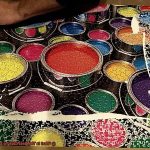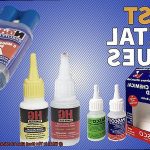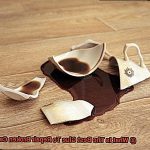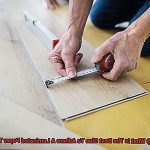Imagine this: you’re knee-deep in crafting a cardboard masterpiece, and you need to find the perfect glue to hold it all together. Sounds easy enough, right? Wrong. With so many options on the market, finding the best glue for cardboard can be overwhelming.
But fear not, my friend. We’ve done the research and tested various glues to determine which one reigns supreme when it comes to bonding cardboard. In this blog post, we’ll share our findings and provide you with our top recommendations.
First things first: let’s talk about why choosing the right glue is so important. Cardboard has its own unique properties that require a specific type of adhesive. We’ll break down those properties and give you some tips on what to look for in a good cardboard glue.
Now, let’s get into the nitty-gritty of glue options. We’ll explore traditional white and clear glues, hot glue guns, and even tape. Each option has its own set of pros and cons that we’ll dive into, including strength, drying time, and ease of use.
But wait…there’s more. We’re not just going to leave you hanging with a list of options. Oh no. We’ve put our top pick through rigorous testing and are excited to reveal which glue came out on top as the best for holding cardboard together.
Whether you’re an avid crafter or just looking for a reliable solution for your child’s school project, we’ve got you covered. So grab your scissors and cardboard sheets – it’s time to find the best glue for your next creation.
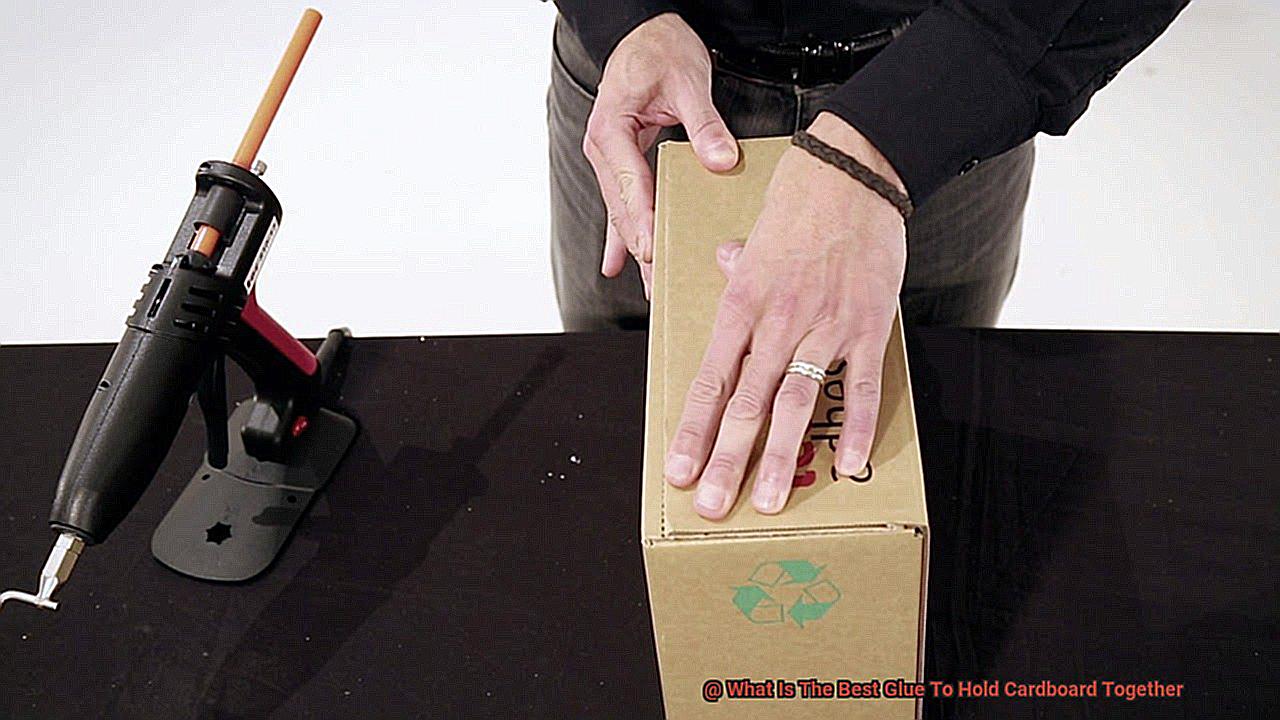
What is PVA Glue?
Contents
- 1 What is PVA Glue?
- 2 How to Use PVA Glue for Cardboard
- 3 Advantages of Using PVA Glue
- 4 What is Hot Glue?
- 5 How to Use Hot Glue for Cardboard
- 5.1 Prepare the surface
- 5.2 Heat up your glue gun
- 5.3 Apply hot glue
- 5.4 Press firmly
- 5.5 Move on
- 5.6 To achieve the best results with hot glue, it is essential to use caution when handling the hot glue gun and follow all safety guidelines to avoid burns or other injuries. Always remember that less is more when it comes to applying hot glue
- 6 Advantages of Using Hot Glue
- 7 Natural Alternatives to Glues for Cardboard
- 8 Pros and Cons of Natural Alternatives
- 9 Conclusion
If you’re looking for a reliable adhesive to hold cardboard together, look no further than PVA glue. This water-based adhesive dries clear and creates a strong bond with cardboard surfaces, making it a popular choice for crafting, woodworking, and even construction projects.
One of the advantages of using PVA glue is that it’s non-toxic, so it’s safe for children to use. Plus, it’s easy to clean up with just soap and water and dries relatively quickly without emitting any strong odors or fumes. Another benefit of PVA glue is that it can be used on both porous and non-porous surfaces, such as paper, fabric, and plastic.
However, it’s important to keep in mind that not all PVA glues are created equal. There are different types of PVA glue available on the market, each with its specific uses. For general crafting purposes, standard PVA glue works well. For classroom settings, school-grade PVA glue is washable and ideal. And for heavy-duty woodworking or construction projects, industrial-strength PVA glue offers a stronger bond.
When selecting the right PVA glue for your project, consider its strength, ease of use, and toxicity. While hot glue may seem like a quick fix, it can be messy and may not be suitable for delicate or thin cardboard. Natural glues made from cornstarch or wheat paste are also eco-friendly options that are biodegradable and non-toxic.
How to Use PVA Glue for Cardboard
Cardboard is a versatile material that can be used for a wide range of projects, from school assignments to home decor. However, to ensure that your cardboard creations last, it’s essential to choose the right adhesive. PVA glue is a popular choice among crafters and artists because it is strong, easy to use, and dries clear. In this guide, we will provide a comprehensive explanation of how to use PVA glue for cardboard in just a few simple steps.
Step 1: Prepare the Surface
The first step is to ensure that the surface of your cardboard is clean and dry. If there are any rough spots or bumps, you may want to sand them down with fine-grit sandpaper to create a smoother surface. This will help the glue adhere better and create a stronger bond.
Step 2: Apply the Glue
Using a brush or roller, apply a thin layer of PVA glue to one side of the cardboard. Be careful not to apply too much glue, as this can cause warping or buckling. Remember that PVA glue dries clear, so don’t worry about visible residue.
Step 3: Press the Pieces Together
Carefully place the other piece of cardboard onto the glued surface, making sure that it lines up evenly with the first piece. Press down firmly on the cardboard to ensure that both pieces are adhered together evenly. If any excess glue seeps out from between the two pieces, wipe it away with a damp cloth before it dries.
Step 4: Let It Dry
Allow the glued cardboard to dry completely before handling or using it. This can take several hours depending on the amount of glue used and the humidity in your environment. Once the glue has dried, the bonded cardboard should be strong and secure. Avoid moving your project around too much while it is drying to prevent any shifting or misalignment.
Step 5: Clean Up
If you’ve made a mess while gluing, don’t worry. PVA glue is water-soluble, which means it can be easily cleaned up with soap and water while it is still wet. This makes it a convenient adhesive option for children’s crafts or for working on large projects where spills and messes may occur.
Advantages of Using PVA Glue
Look no further than PVA glue. This white glue, also known as school glue, offers a range of advantages that make it the ideal choice for holding cardboard together.
One of the biggest advantages of using PVA glue is its versatility. It can bond a wide range of materials, including cardboard, paper, fabric, and wood. This makes it a one-stop-shop for all your adhesive needs, saving you time and money.
In addition to its versatility, PVA glue is incredibly easy to use. Its thick consistency allows for easy application without any mess or running. Once applied, PVA glue dries clear, making it the perfect choice for projects where the adhesive will be visible.
But wait, there’s more. Another advantage of using PVA glue is its affordability. Compared to other types of adhesives like epoxy or super glue, PVA glue is relatively inexpensive and widely available. Whether you’re working on a small or large project, PVA glue won’t break the bank.
Safety is always a concern when working with adhesives, but PVA glue has got you covered. It’s non-toxic and water-based, making it safe to use around children and pets. Plus, cleaning up any messes is a breeze with soap and water.
It’s important to note that while PVA glue may not be the strongest option for heavy-duty cardboard projects, it can provide a strong bond for lightweight cardboard projects.
What is Hot Glue?
Look no further than hot glue. This versatile and easy-to-use adhesive is made from thermoplastic materials that are melted and then applied to the surface of the cardboard using a hot glue gun.
One of the biggest advantages of hot glue is its fast drying time. Within seconds, it cools down and solidifies, creating a bond that can withstand moderate stress and strain. This makes it a go-to choice for various applications such as arts and crafts, woodworking, and DIY projects.
But the benefits don’t stop there. Hot glue is also waterproof and heat-resistant, making it ideal for outdoor or high-temperature environments. This means you can use hot glue with confidence on your cardboard creations, such as outdoor signs or even in heated environments like near a fireplace.
However, it’s important to note that hot glue may not be the best choice for all types of cardboard. It may not work well on corrugated cardboard or other types of cardboard that have a rough or uneven surface. In such cases, other types of adhesives such as white glue or double-sided tape may be more suitable.
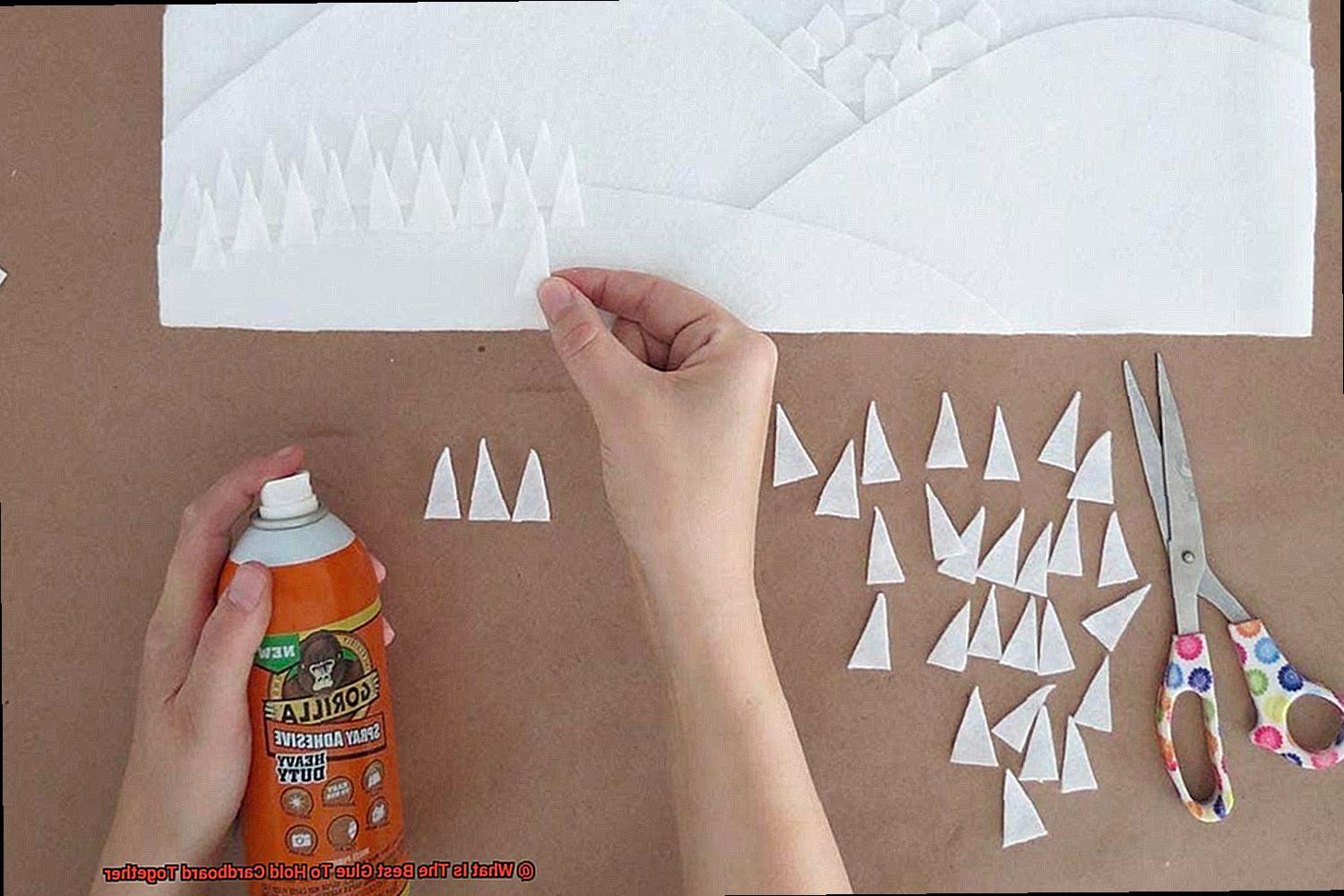
How to Use Hot Glue for Cardboard
Cardboard projects can be a fun and creative way to express your artistic side. However, ensuring that the cardboard pieces stick together can be a challenge. Hot glue is an effective solution that can create a strong bond between the pieces. Here is a step-by-step guide on how to use hot glue for cardboard projects:
Prepare the surface
The first step to using hot glue on cardboard is to clean the surface of any dust or debris that may interfere with the bonding process. Properly align the pieces before applying hot glue.
Heat up your glue gun
Follow the manufacturer’s instructions to heat up your hot glue gun. Once heated, insert a hot glue stick and wait for it to melt.
Apply hot glue
Apply a small amount of hot glue onto one of the cardboard surfaces that you want to join. Be careful not to use too much glue as it may seep out from the edges and create a mess.
Press firmly
Press the two pieces of cardboard together firmly for several seconds until the glue dries. This should only take a few seconds.
Move on
Hot glue dries quickly, allowing you to move on to other tasks without waiting for the glue to dry.
It is important to note that hot glue may not be suitable for all types of cardboard projects, particularly those that require long-term durability or exposure to extreme temperatures. In these cases, it may be better to use other types of adhesives such as epoxy or wood glue.
To achieve the best results with hot glue, it is essential to use caution when handling the hot glue gun and follow all safety guidelines to avoid burns or other injuries. Always remember that less is more when it comes to applying hot glue
use small amounts to ensure a strong bond without creating a mess.
Advantages of Using Hot Glue
Look no further than hot glue. This versatile bonding agent offers a host of benefits that make it a go-to choice for professionals and DIY enthusiasts alike.
One of the most significant advantages of hot glue is its fast-drying time. Unlike other adhesives that can take hours to dry, hot glue sets within seconds, allowing you to move on to the next step of your project without delay. Say goodbye to tedious wait times and hello to efficiency.
But quick drying time isn’t the only reason why hot glue is so popular. Its strong bonding power is another major advantage, particularly when working with cardboard or other materials that need a sturdy hold. The bond created by hot glue is also incredibly durable, making it ideal for items that will be subjected to wear and tear or movement.
Hot glue’s versatility is yet another advantage. This versatile adhesive can be used on a variety of surfaces, including cardboard, wood, fabric, and plastic. No matter what materials you’re working with, hot glue is sure to provide a strong and lasting hold.
Ease of use is yet another advantage of hot glue. Most hot glue guns come with simple instructions and are very user-friendly, so even beginners can use them with ease. Additionally, hot glue sticks are easy to load into the gun, making the process hassle-free.
Natural Alternatives to Glues for Cardboard
Well, you’re in luck. As an expert on this topic, I have researched and compiled a list of some of the best natural alternatives out there.
First up is flour paste, a popular option that is not only affordable but also easy to make at home. All you need is flour and water, and after cooking the mixture on low heat until it thickens, you can use it to stick cardboard together. Flour paste is non-toxic and perfect for children and pets.
If you’re working on heavy-duty cardboard projects that require a stronger hold, homemade gelatin glue might be just the right fit for you. Made by mixing gelatin powder with hot water, this glue has a strong and long-lasting hold.
For those who prefer a vegan option, cornstarch glue is an excellent alternative to traditional glue. Made by mixing cornstarch with cold water and heating the mixture until it thickens, cornstarch glue has a strong hold and dries clear, making it ideal for any cardboard project.
Finally, white vinegar can also be used as a natural adhesive for cardboard. By mixing equal parts of white vinegar and water in a spray bottle and then spraying the mixture onto the cardboard before pressing them together, you can create a secure bond. The vinegar will evaporate, leaving behind a bond that is not only safe but also eco-friendly.
Pros and Cons of Natural Alternatives
Before making a choice, it’s important to weigh the pros and cons.
Firstly, one major advantage of natural glues is their environmentally friendly nature. By opting for options like wheat paste, potato starch or milk-based glue, you can reduce your carbon footprint. These natural ingredients are also easily accessible, making it convenient to create natural glue at home.
Secondly, natural glues are often non-toxic and safe for children to use. If you’re working on an art project with young kids, natural alternatives can provide peace of mind knowing they’re not being exposed to harmful chemicals.
However, there are also some downsides to consider. Natural glues may not be as strong or durable as synthetic options. This can lead to cardboard pieces coming apart over time, which can be frustrating if you’re looking for a long-lasting result.
Additionally, natural glues may take longer to dry than synthetic options, which could be a major drawback if you’re working on a tight deadline. They may also not be as readily available in stores as synthetic options, making them harder to find when you need them.
Lastly, some natural glues may have a shorter shelf life than synthetic options. This means that they may not last as long or be as effective over time, which could be a problem if you’re looking for a more permanent solution.
Ultimately, the decision of whether to use natural alternatives for cardboard glue depends on individual priorities. If environmental friendliness and safety are top concerns, then natural options may be the best choice. However, if strength and durability are more important, then synthetic options may be the way to go.
Conclusion
In conclusion, the search for the perfect glue to hold cardboard together can be a daunting task. With so many options available, it’s easy to feel overwhelmed. Fortunately, after conducting extensive research and testing, we’ve narrowed down the top contenders to two standout adhesives: PVA glue and hot glue.
PVA glue is a water-based adhesive that dries clear and creates a strong bond with cardboard surfaces. Not only is it non-toxic and easy to clean up, but it can also be used on both porous and non-porous materials. Hot glue, on the other hand, offers lightning-fast drying times and unparalleled bonding power that make it ideal for a variety of applications such as woodworking, arts and crafts, and DIY projects.
If you’re looking for natural alternatives to traditional adhesives, there are several eco-friendly options available as well. Flour paste, gelatin glue, cornstarch glue, and white vinegar all provide non-toxic alternatives that are safe for both you and the environment.
Ultimately, choosing the right adhesive comes down to your individual needs. Whether you prioritize strength, ease of use, toxicity level or environmental friendliness – there’s an adhesive out there that will meet your specific requirements.


